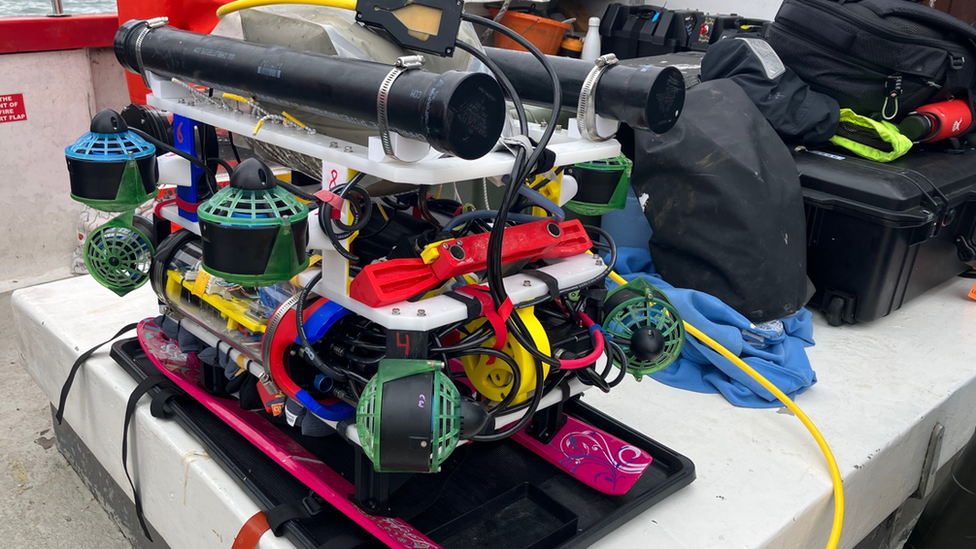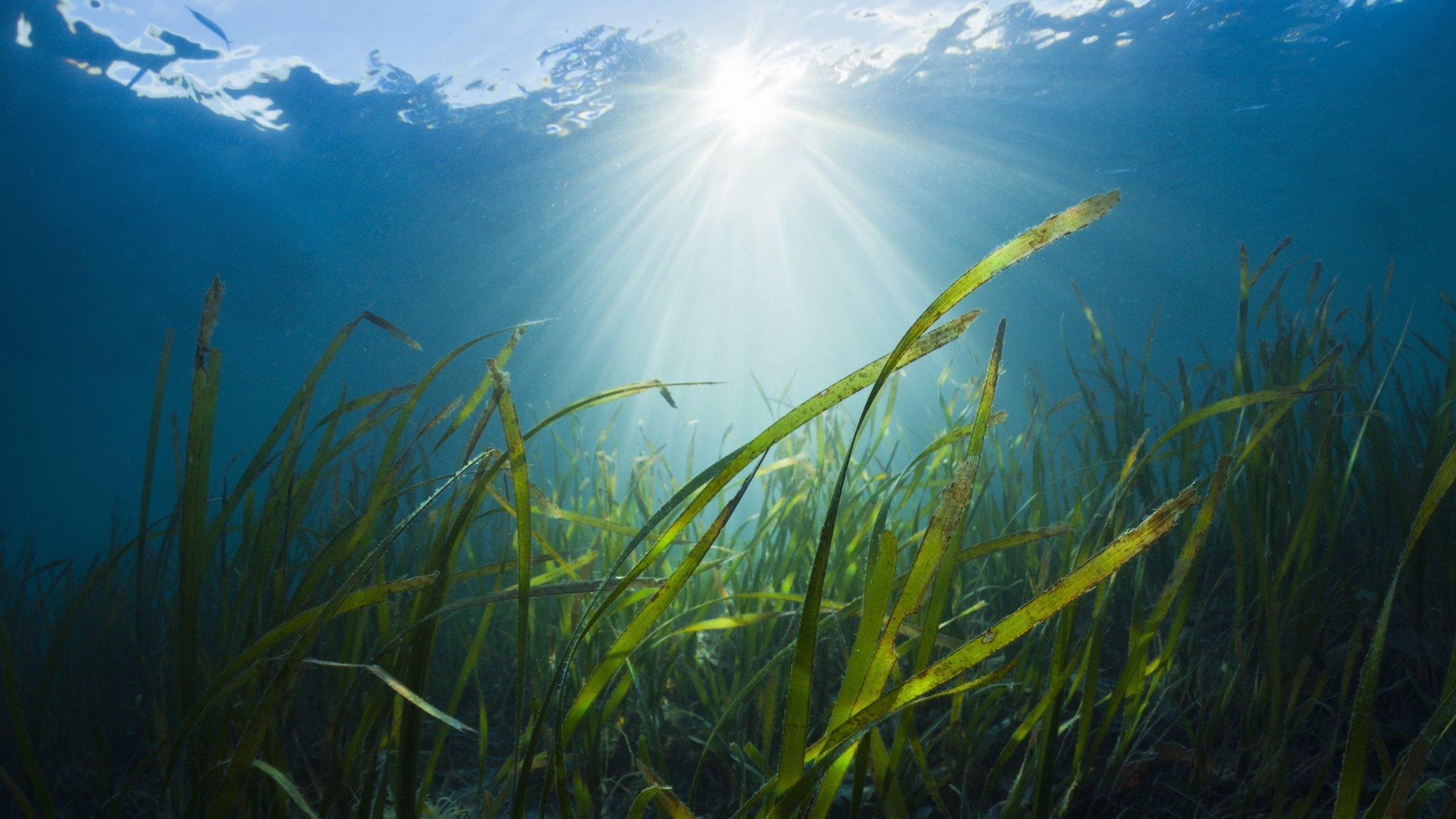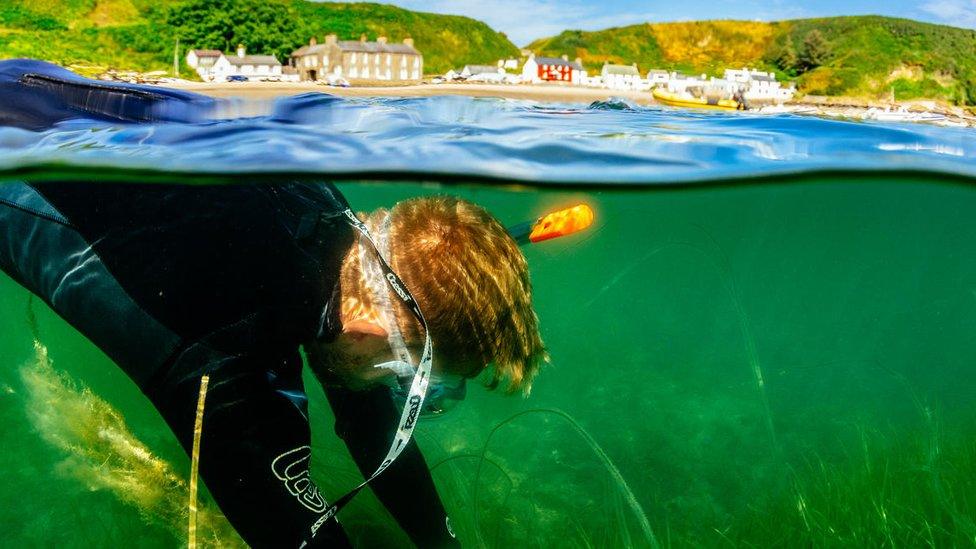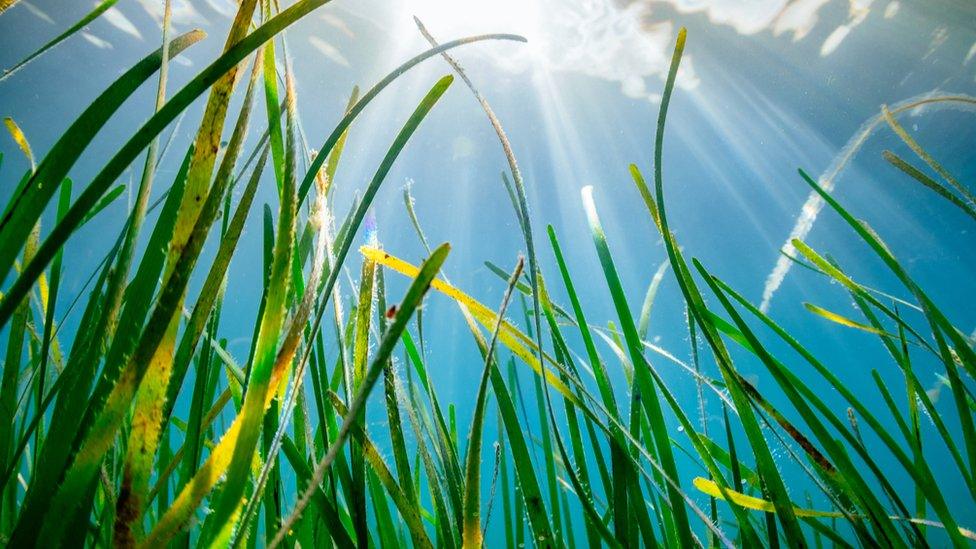Climate change: Robots help seagrass restoration
- Published

Seagrass is a priority habitat around the world
Wales could become a world leader in large-scale seagrass restoration science following successful trials using robots.
Seagrass is known for its ability to store carbon and provide nurseries for fish.
Up to 92% of UK seagrass has been lost, but Wales could lead on restoration, conservationists have said.
The Welsh government said it would discuss how to further support seagrass restoration.
Project Seagrass, WWF and the Swansea University said the country could also produce methodology that could be applied across the world.
The Seagrass Ocean Rescue Upscaling Project (SORUP) in Wales aims to create a blueprint that can be applied to other countries.
In Dale Bay, Pembrokeshire, WWF and Project Seagrass led the UK's first successful seagrass restoration methodological trials and meadow scale restoration project.

Sam Rees says using a remote control robot has made seagrass restoration easier
It was the UK's first seagrass restoration project at a meaningful scale and experts are now developing and trialling technology and methods to make it easier and more cost effective to restore at scale.
SORUP has been using a robot to help plant the seeds at the restoration site in Dale, said manager, Sam Rees.
The robot, called Shack and designed by Reefgen in San Francisco, holds 20,000 seeds mixed with mud which it injects into the sediment in the seabed.
"The aim of our project is to take knowledge that we've learnt already and improve upon it and improve the methodology of seagrass restoration, improve its cost efficiency, its time efficiency and the resources that we use to do it," Mr Rees said.
"We've already stored two hectares here using hand-based methods, but we're now looking how we can improve on that, taking away some of the people it required and using the robot to do that," he said.


The Reefgen robot planter has been used to plant seagrass in Pembrokeshire
Why is seagrass important?
It takes carbon from the atmosphere up to 35 times faster than tropical rainforests
It accounts for 10% of annual ocean carbon storage globally, despite only taking up 0.2% of the seafloor
It protects coasts from erosion
It is a habitat for many types of fish, including cod, plaice and pollock
It produces oxygen
It cleans the ocean by absorbing polluting nutrients
Source: WWF, Sky Ocean Rescue, Swansea University

According to Leanne Cullen-Unsworth, CEO of Project Seagrass, taking the lead in this field could bring international opportunities.
"We're in such a good position to be sharing the message with the rest of the world about how important this habitat is, that we can lead on the science to put this habitat back.
"We've got the scientific expertise and the goodwill in place to be able to restore at scale."
"The Welsh government had said quite a long time ago that they were going to make a commitment to seagrass and the marine environment more broadly and we just want that to be defined, we want to work with them to develop a programme that is going to help and protect seagrass."
The Welsh government said it wanted to work with nature to help fight the climate and nature emergencies, adding that was why First Minister Mark Drakeford included seagrass restoration in his programme for government.
"The minister is looking forward to visiting Project Seagrass and WWF Cymru this summer to see their plantation work in action and discuss what action we can take to scale-up their vital work," a spokesman said.
Related topics
- Published22 February 2023

- Published12 August 2022

- Published10 March 2020
